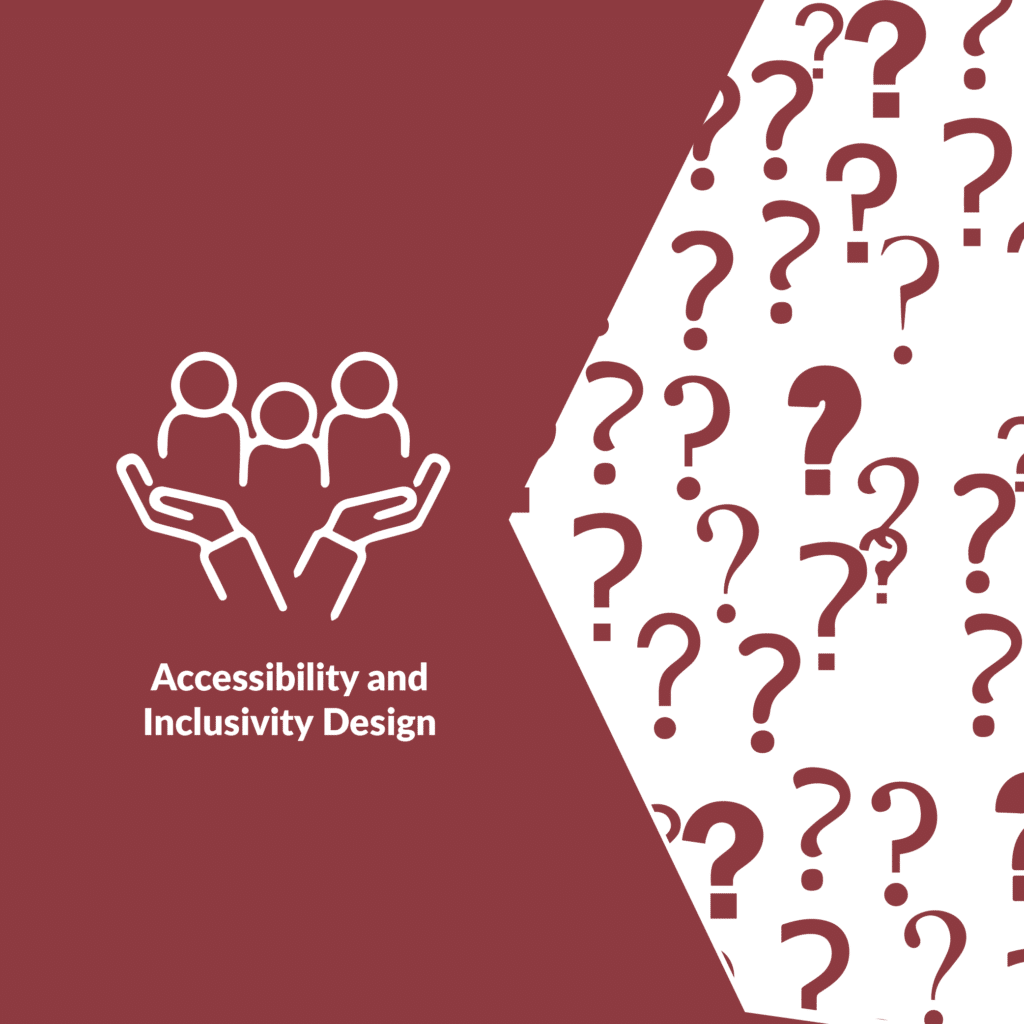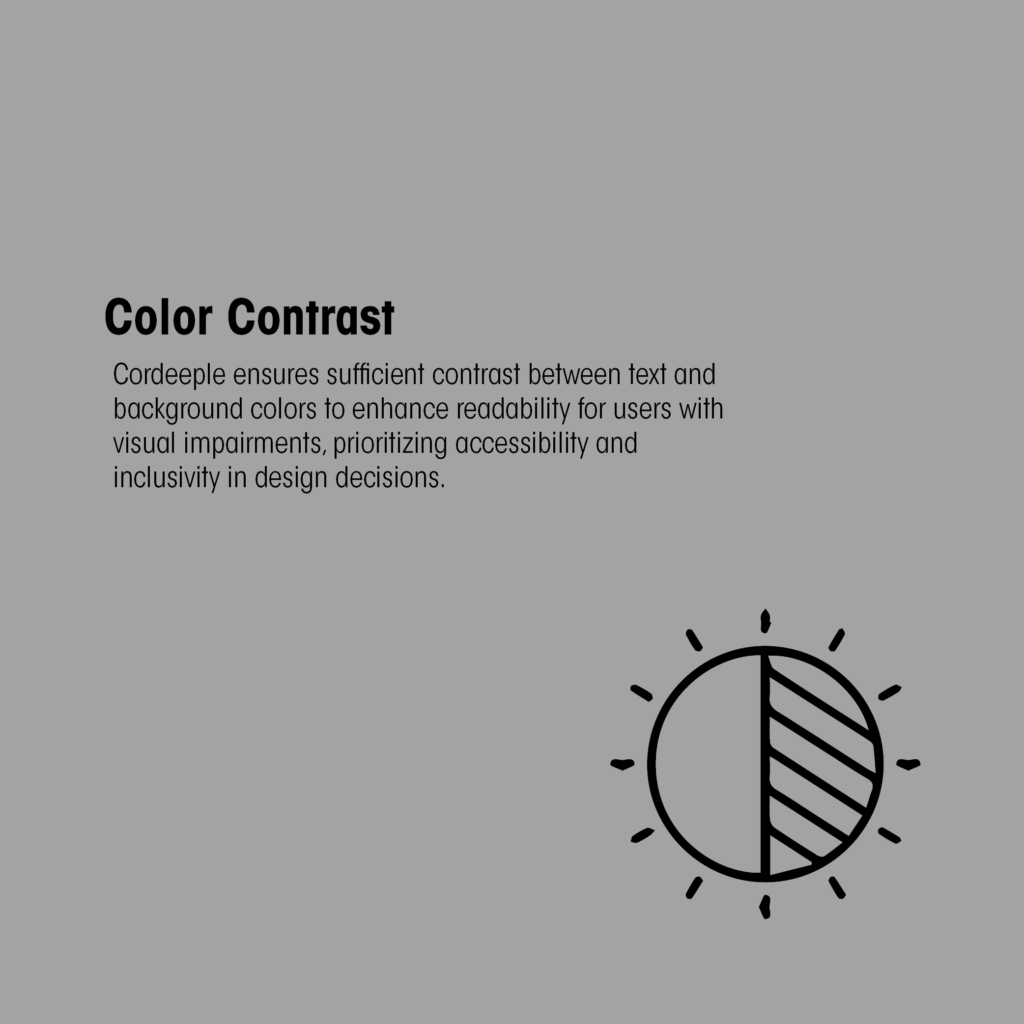Canadian Accessibility and Inclusivity Design
Empowering Accessible and Inclusive Digital Experiences for All, Ensuring Equal Participation for Users of All Abilities.


What is Accessibility and Inclusivity Design?
Accessibility and Inclusivity Design is the practice of creating products, services, and environments that are accessible and usable by people of all abilities. It aims to remove barriers to access and ensure equal participation for everyone, regardless of disabilities or limitations. By prioritizing inclusivity, this design approach fosters a more equitable and enjoyable experience for all users.
Why Prioritize Accessibility and Inclusivity Design?

Cultivate Strategic Decision-Making and Achieve Desired Outcomes Effectively with Our Tailor-Made Solutions.

Providing descriptive text for images to ensure accessibility for visually impaired users.

Ensuring all website features and functionalities can be accessed and operated using a keyboard alone.

Ensuring sufficient contrast between text and background colors to enhance readability for users with visual impairments..

Ensuring website content is compatible with screen reader software to facilitate access for visually impaired users.
Enhanced accessibility can improve user experience for all customers, increasing sales and customer satisfaction.
Accessible websites and facilities cater to a broader range of guests, leading to increased bookings and positive reviews.
Accessible online banking platforms ensure all customers can manage their finances independently, fostering trust and loyalty.
Inclusive design enables students of all abilities to access learning materials and participate fully in educational activities.
Accessible websites and digital health tools ensure patients can access vital information and services, promoting better health outcomes.
Accessible government websites and services ensure equal access to information and resources for all citizens, fostering inclusivity and transparency.
Imagine effortlessly navigating through a website, finding exactly what you need without frustration, just like strolling through a well-organized store.
Picture accessing a website where every piece of information is intuitively categorized and easily accessible, just like finding your favorite book in a well-organized library.
Visualize making decisions on a website where options are presented clearly, making it easy to choose what’s best for you, just like browsing a menu with mouth-watering dishes.
Not right for you?
Don’t worry, we have many ways to help you and your business

Crafting user-centric interfaces and experiences for websites and applications to enhance usability and engagement.

Organizing and structuring content in a logical and intuitive manner to facilitate user navigation and understanding.

Designing decision-making processes and user flows to guide users towards desired actions and outcomes.

From Information to Choice Architecture: Crafting dynamic and visually stunning websites tailored to your brand’s identity and user needs for a seamless online experience.
Accessibility and Inclusivity Design involves creating products, services, and environments that are usable by people of all abilities. It’s important because it ensures equal access and participation for everyone, promoting inclusivity and diversity.
Accessibility and Inclusivity Design benefits businesses by expanding their customer base, improving user experience, and enhancing brand reputation. It also helps businesses comply with legal requirements and fosters a culture of inclusivity and social responsibility.
Common accessibility barriers include lack of alternative text for images, poor keyboard navigation, insufficient color contrast, and inaccessible forms. These can be addressed by implementing accessible design principles, using proper coding techniques, and conducting accessibility audits.
Certainly! Examples include accessible online banking platforms, screen reader-compatible educational websites, and inclusive e-commerce websites with features like text resizing and color contrast adjustments.
Cordeeple offers comprehensive accessibility audits, design consultations, and implementation services to ensure your website or app meets accessibility standards and guidelines. We also provide training and resources to empower your team to create accessible digital experiences.
Accessibility and Inclusivity Design applies to both digital and physical environments. It encompasses considerations such as wheelchair accessibility, signage, lighting, and tactile elements to ensure equal access and participation for all individuals.
Past tense. past participle.
Courted and successfully matched
“These clients were Cordeeped”
We’re here to continually court our clients, because we’re in it for the long run.
